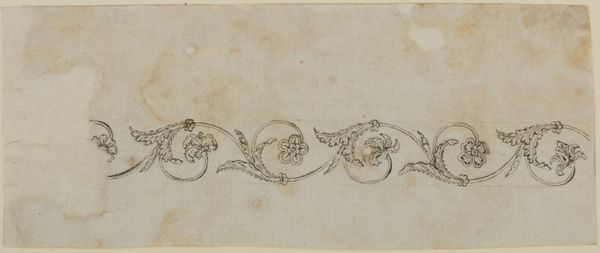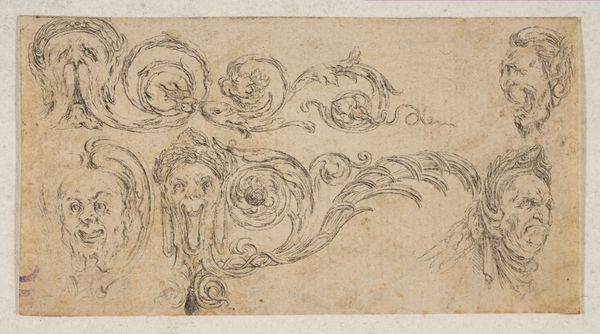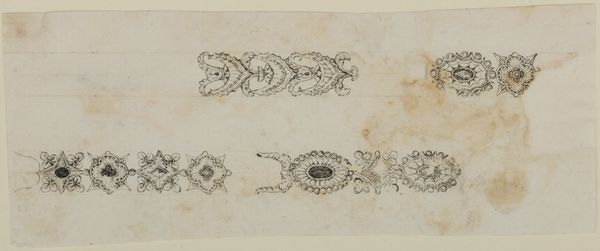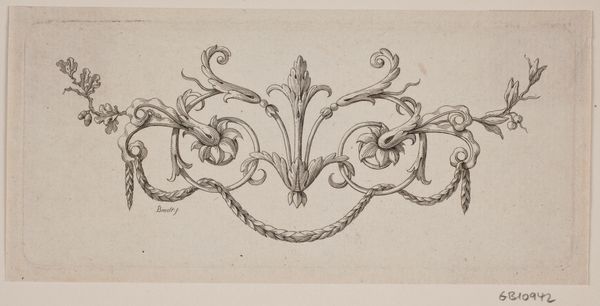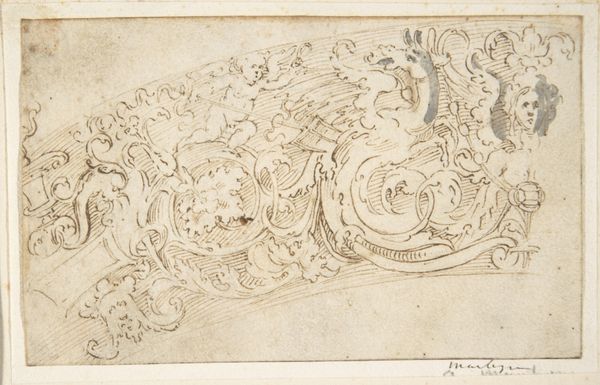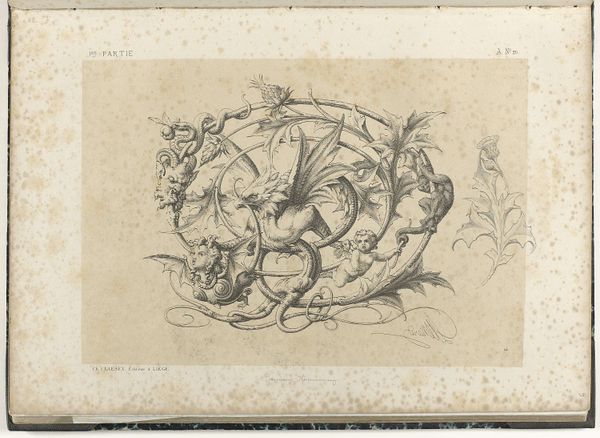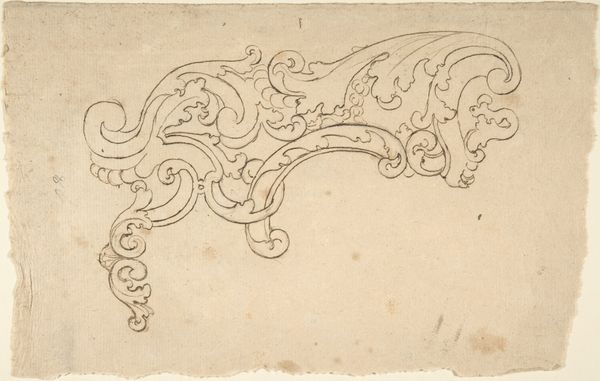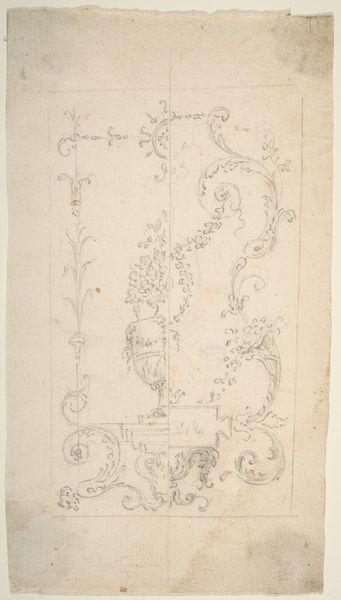
Design for the Decoration of Firearms 1772 - 1830
0:00
0:00
drawing, paper, pencil
#
drawing
#
neoclacissism
#
paper
#
pencil
#
line
#
academic-art
#
decorative-art
Dimensions: 1 3/4 x 5 7/8 in. (4.5 x 14.9 cm)
Copyright: Public Domain
Curator: At first glance, it evokes a feeling of subdued elegance. The lines are delicate and the repeating patterns are rhythmic. Editor: We are looking at "Design for the Decoration of Firearms," a drawing rendered in pencil on paper attributed to Nicolas Noël Boutet. Dating from sometime between 1772 and 1830, it resides here at the Metropolitan Museum of Art. Curator: Decoration of firearms. It feels somewhat… incongruous? The graceful floral motifs seem almost too delicate for such an object. Do you get a sense of visual harmony and balance, or are you thinking about what types of sociopolitical uses that firearms might be employed in, influencing art? Editor: Precisely! Boutet was celebrated for elevating the craft of gun-making into an art form, catering to an aristocratic clientele who sought beauty even in tools of power. We see in it a manifestation of the Neoclassical ideal, which blended classical aesthetics with contemporary functionality. Curator: And those floral motifs… Acanthus leaves, rosettes, and perhaps a stylized fleur-de-lis? Each carries historical weight. The fleur-de-lis is closely connected with French royalty. Was this designed for presentation firearms that a head of state may give as gifts? Editor: Precisely. Consider, also, how these decorative elements function symbolically. The repetition creates rhythm, an echoing harmony with connotations of natural growth, implying ideas of expansion or extension—in any direction. Curator: I hadn’t considered expansionism there. That makes it very explicit as propaganda! It brings into sharp relief the violence lurking beneath these refined forms. The design normalizes access to state sanctioned tools. It serves the normalization of militarization that follows through modernity. Editor: It’s quite complex, isn’t it? How this drawing marries beauty with an inherent purpose, of something we deem destructive. This visual language of prestige, class and hierarchy through these symbols would be an enduring reminder, and marker, on these firearms. Curator: Well, seeing these delicate embellishments certainly offers much to ponder regarding our relationship to power, representation, and visual language in its most persuasive forms. Editor: Absolutely, and how these carefully crafted images reflect larger societal forces at play in the late 18th and early 19th centuries. It reminds us that context truly shifts the lens through which we see an object.
Comments
No comments
Be the first to comment and join the conversation on the ultimate creative platform.
